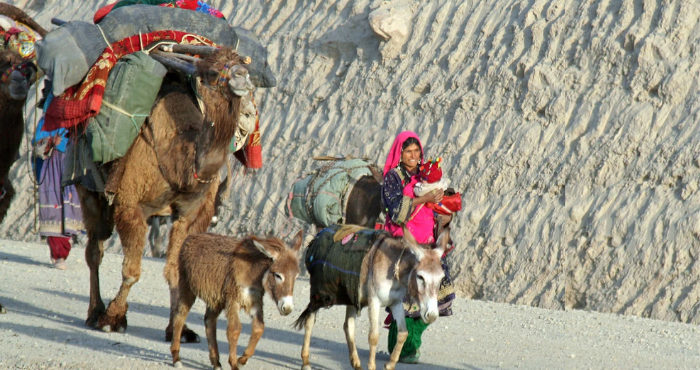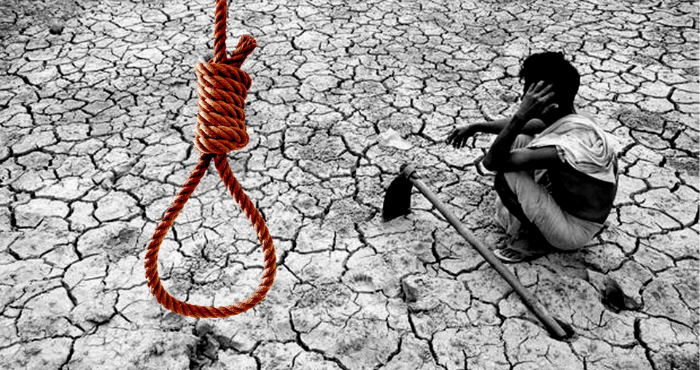Troopel.com #Shan-E-Kisaan Series - The Role of Farmers and Rural India in the Economy
447
0
·
2020/09/29
·
3 mins read
☕
WriterShelf™ is a unique multiple pen name blogging and forum platform. Protect relationships and your privacy. Take your writing in new directions. ** Join WriterShelf**
WriterShelf™ is an open writing platform. The views, information and opinions in this article are those of the author.
Article info
Date:
Published: 2020/09/29 - Updated: 2020/09/29
Total: 707 words
Like
or Dislike
More from this author
More to explore











“India's agricultural growth rate used to be 3.7 percent during 2013-14, but at present, the country's agricultural growth rate has reached 0.2 percent. At the same time, it was reported in the Economic Survey 2014 that in 2014, the rural wage growth had come down to 3.6 percent, which was 20 percent in 2011. ”
The intention behind showing these statistics is to make people aware of the conditions of the farmers are worsening and to bring out the real picture of the agriculture sector at present.
Let’s talk about this decade between 2010- 2019, about what were the needs of India as an agrarian country and why rural India is important for the economy?
In 2010, the global economic recession that started in the year 2008 became a big challenge for the country. But due to the continuous demand for consumption goods, the impact of this recession was negligible. Manmohan Singh’s government still receive praises for their efforts in rescuing India in its dark days of the financial crisis.
But especially during this time, rural India did not allow any reduction in their expenses and despite being completely dependent on agriculture, they continued to buy the things they needed, showing how important rural India is for the country’s economy.
But in the middle of this decade, we saw how the country started going through a severe agrarian crisis, which increased the economic pressure on about 44 crore people in the agricultural sector.
Now, the question here is who should be responsible for this? Monsoon or the Government? Let’s have a look.
According to data taken from some authentic news sources
On June 2, 2015, Union Minister of Science and Technology and Earth Sciences Harsh Vardhan said, "Let’s Pray to God that the revised forecast doesn’t true," as the India Meteorological Department further downgraded the monsoon rain forecast on 2 June in the wake of strengthening El Nino conditions over the Pacific Ocean. Monsoon disappointed the farmers again in 2015, due to which the crops were damaged in many parts of the country for the sixth time.
For the last three years, the summer monsoon had been weak. There was also unseasonal rain and hail in winter, due to which the agricultural growth rate was estimated to be near zero. If this pattern remains, then the country may have to go through the worst drought in the current history.
What is the role of the government?
There is a growing fear of scarcity of food grains and increasing expanse of food items in the country. And, this will have the biggest impact on farmers. Due to the decrease in agricultural productivity, there is a rapid growth of the financial crisis. The agricultural economy is now mainly made up of debt. This will affect 60 percent of the country's population, which is dependent on agriculture and directly affects the national economy.
Too much or too little rainfall has resulted in continuous crop loss, which has brought the agricultural growth rate to 0.2 percent, which used to be 3.7 percent in 2013-14. According to NSSO (National Sample Survey Office) released in February (2015), agricultural credit increased by 24 percent during 2003-13. During this period, agriculture gross the domestic product i.e. GDP increased by only 13 percent. According to the experts, this is very concerning as it indicates that other growth factors like production and consumption are either stagnant or decreasing but agricultural GDP is rising due to 'credit growth'.
What was the situation of farmers in this decade?
In the year 2010, 54 people in Andhra Pradesh committed suicide simply because they were facing pressure for recovery of the loan amount by microfinance companies. These microfinance companies follow no laws and are simply meant to recover their money at high-interest rates. On the other hand, the average earning of a farmer‘s family was Rs 214 while the expenditure was Rs 207 per month between 2004 and 2014. That is, a farmer's family had 7 rupees 13 paise a day while spending 6 rupees 90 paise in it.
We will be talking about the economic condition of the farmers and the reasons behind their suicide in our next video.
For other interesting news related to the farmers, keep reading troopel.com